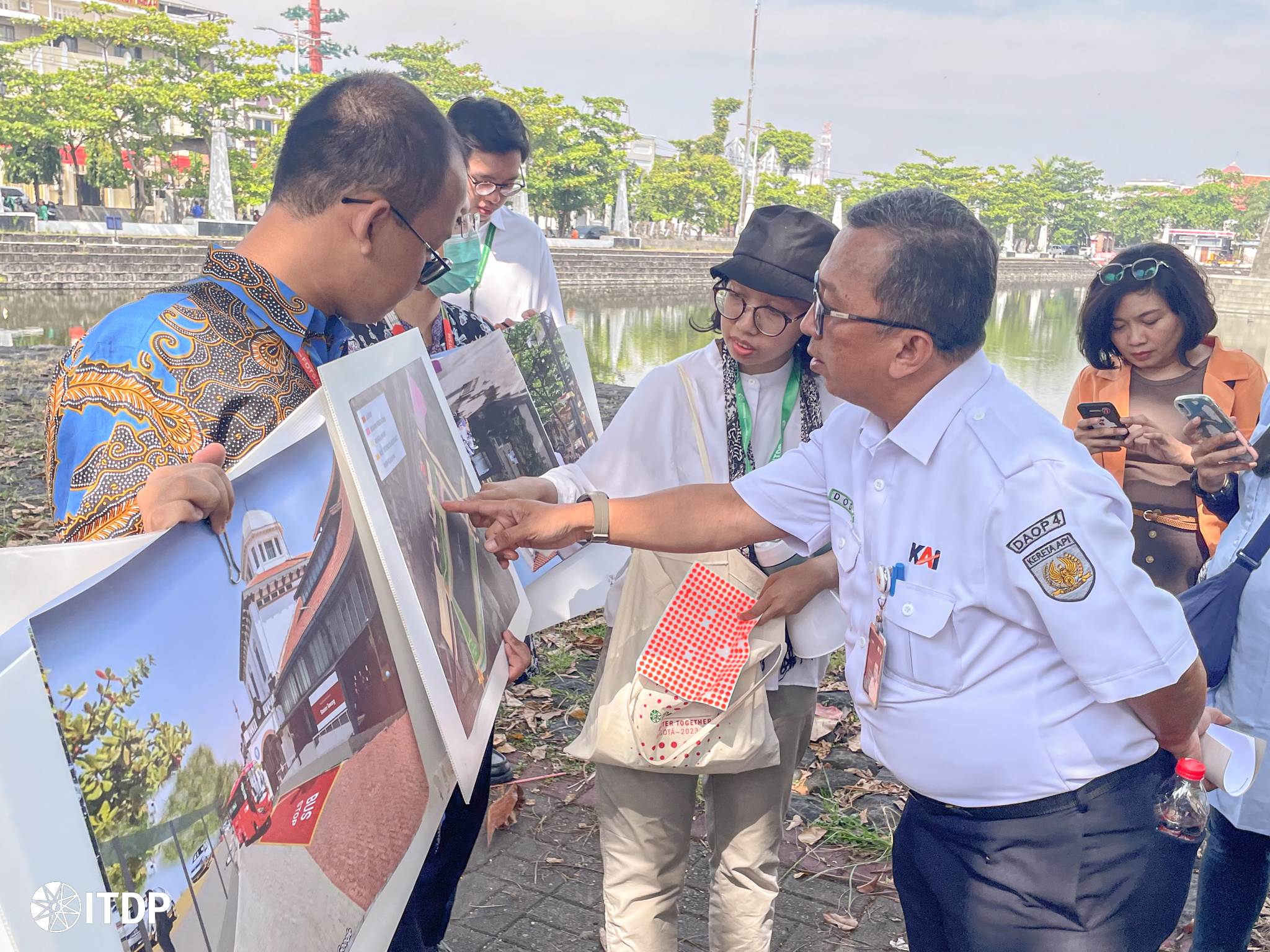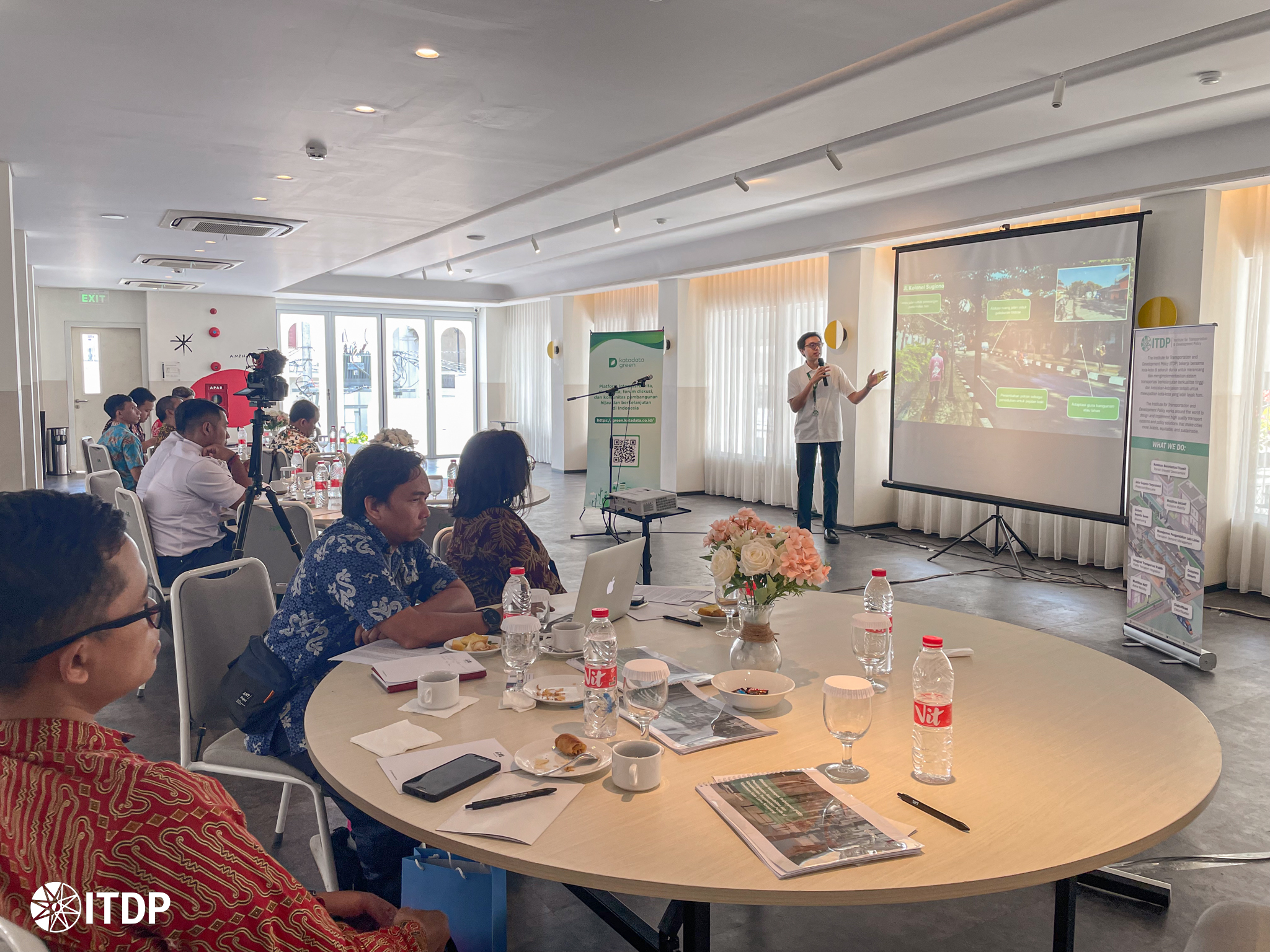January 31, 2024
Semarang: Reviving The Old Town into a Sustainable Future
By Annisa Dyah Lazuardini, Urban and Visual Design Associate II ITDP Indonesia
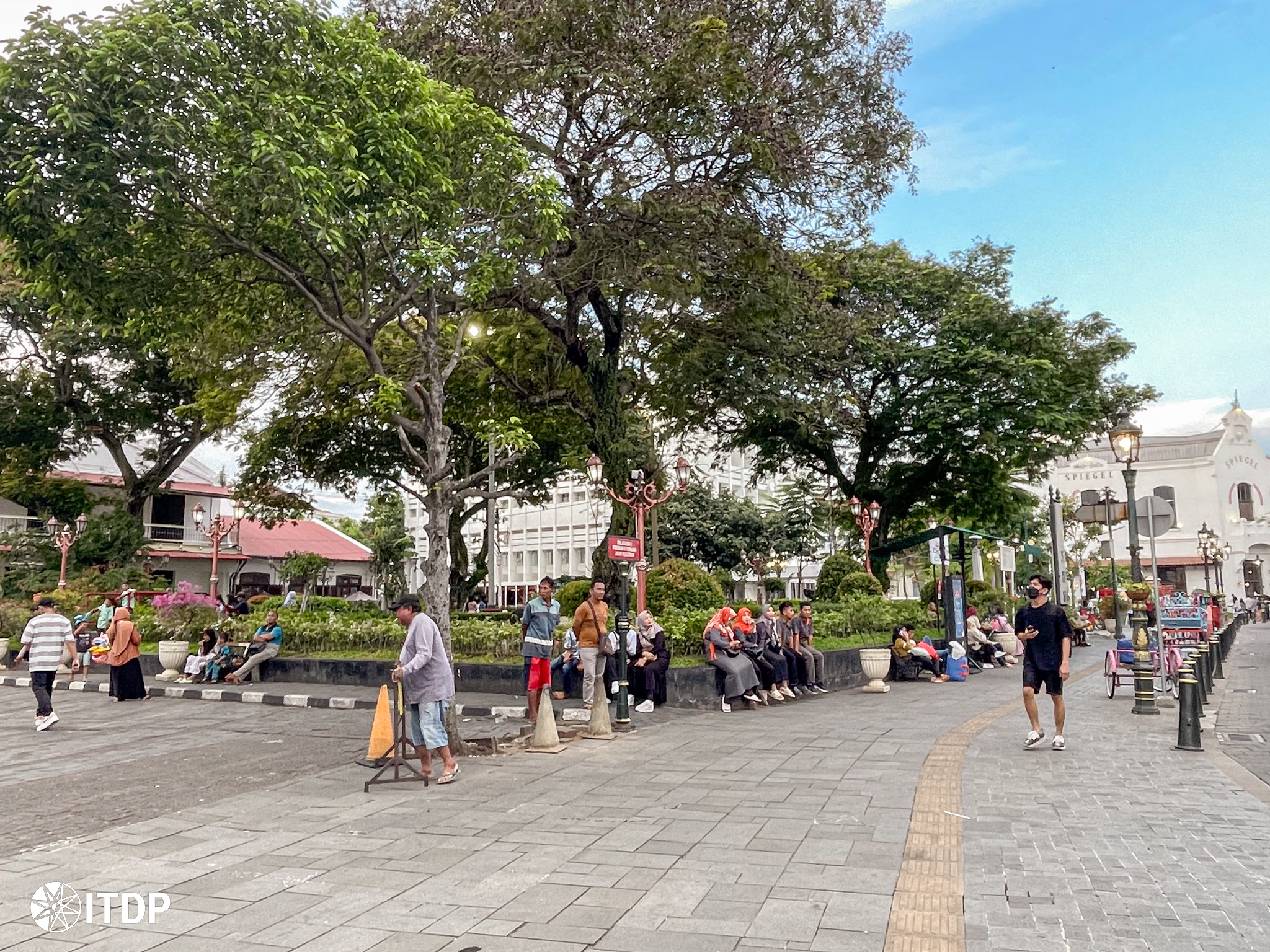
In many cities, the old town area always has its own charm for both tourists and locals, including Semarang’s Old Town. Historically, these cities were usually built before the 20th century, which means before motorized vehicles occupied our urban street space. They were already humanist in scale; narrow streets, small blocks, and active frontages with direct access for pedestrians. The area we now refer to as the ‘old town’ is, in fact, better represents the future sustainable city.
As the heart of government, industry, and trade during the colonial era in Semarang, Kota Lama (Semarang’s Old Town) is now a revived cultural heritage and has become the city’s strategic area for social and cultural activities. Aside from being one of the prioritized cities for national mass transit development, Semarang also has a vision of creating a UNESCO-recognized world heritage city. Since 2017, Semarang Old Town has been intensively revitalized. This includes establishing it as a pedestrian-friendly area and adopting the concept of green transportation to reduce air pollution, as stated through Semarang City Regional Regulation No. 6 of 2021.
In cultural heritage areas, the impact of high volumes of motorized traffic not only endangers pedestrians and cyclists, but also old buildings that are more sensitive to vibrations caused by passing motorized vehicles. It also happens in the Kota Lama area, where motorized vehicles’ volume and speed is often high, and last mile connectivity is still inadequate. This condition further emphasizes the urgency of limiting the use of motorized vehicles within the area, as well as encouraging people to shift into more sustainable modes of transport.
A continuous effort in shifting towards a sustainable future
Since 2017, ITDP Indonesia has been providing sustainable transportation technical assistance to Semarang City, including the improvement of Trans Semarang, the city-owned bus services. Being the fifth largest metropolitan city in Indonesia, Semarang is the first city other than Jakarta to implement its city-owned bus system, with a consistent budget commitment compared to other cities who started around the same year. However, back in 2017 public transport mode share was still around 20% in Semarang (ITDP & IGES Survey, 2017).
Although 60% of Trans Semarang passengers walk to access the bus stops (Rakhmatulloh et al., 2020), accessibility and first-last mile connectivity to Trans Semarang is still an issue. Therefore in 2021-2022, along with Semarang local communities we developed Semarang Inclusive Mobility recommendations, based on the consensus from representatives of vulnerable groups including people with disabilities and women.
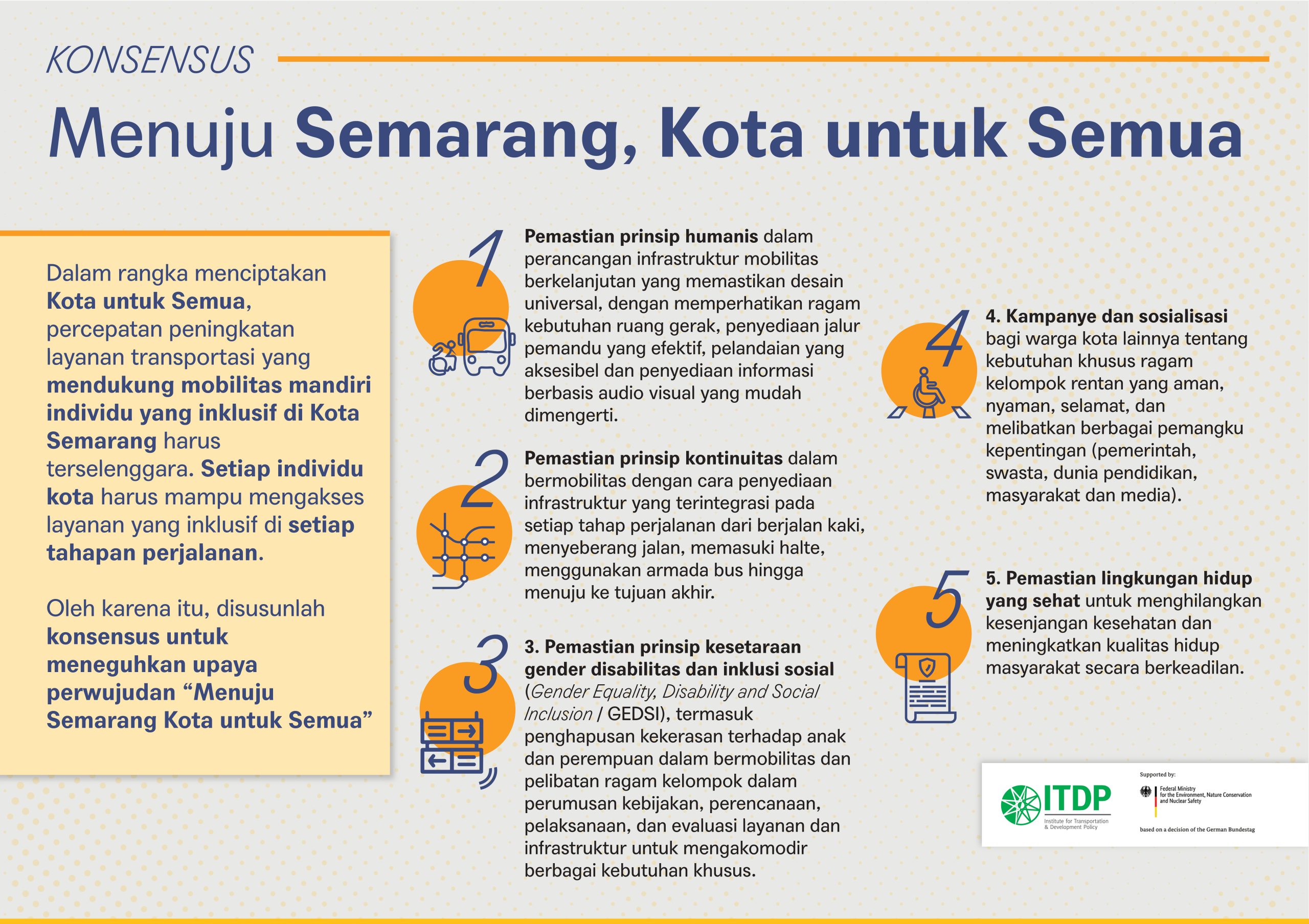
This consensus acts as a fundamental principle for our technical recommendations, including Trans Semarang accessibility and the non-motorized transport infrastructure. This year, we continue our assistance in reducing Semarang’s emissions through a study of Trans Semarang e-bus pilot route, public transport accessibility and connectivity improvement in Kota Lama, and a bike sharing roadmap which aims to be adopted into the city’s NMT Roadmap.
Semarang has recently updated their Old Town area development guideline through Semarang City Mayor Regulation (PERWALI) Number 29 of 2023, and the area is divided into a core zone (European colonial area) and supporting zones (Kampung Melayu, Kampung Batik, Pecinan area). However, current improvement is still limited within the core zone, lacking non-motorized transport connectivity with the supporting zones. To pursue its long-term development into a low-emission and pedestrian-friendly area, ITDP identified the need for traffic management and limitation, improved crossing facilities, shades, and frontage activations, also integration between public transportation modes and provision of bike sharing services.
Understanding the street-level experience
One of the challenges often faced in area development planning is the number of stakeholders that need to be involved. Ensuring a unified vision among planners, area managers, and regulators is important at the planning stage. For this reason, on July 13, 2023 ITDP Indonesia collaborated with Katadata Green to organize an FGD involving the Old City Area Management Agency (BPK2L), Semarang City Regional Development Planning Agency (Bappeda), Regional Financial and Asset Management Agency, City and Provincial Transportation Agency, Public Works Office, Spatial Planning Office, and public transportation operators such as BLU UPTD Trans Semarang and PT Kereta Api Indonesia. Through the FGD, each stakeholder can share their concerns and suggestions for the design, and we managed to decide bus stop locations, traffic management plan, and junction redesign.
The key to understand pedestrian accessibility issues is having a first hand experience of walking in the area. We have been using this approach for assessing Trans Semarang accessibility with vulnerable groups in 2022, and in 2023 we invited FGD participants to walk through one of the proposed routes to help understand the issues better and have a thorough discussion afterwards. Moreover, to understand broader perspectives from Semarang locals and tourists, we conducted an interactive survey to capture perceptions of pedestrian safety, security, and comfort in the Old Town area. Tourists, locals, business owners, workers, Trans Semarang users, and children were invited to map out their favorite destinations, walking obstacles, and their appetite to use bike sharing services.

As for our survey in the Old Town area, the most highlighted issues were the availability of crossing facilities and the activation of surrounding streets to increase security while walking at night. There are still many intersections that are not yet prioritizing pedestrians, such as Jl. Cendrawasih, the Kota Lama Museum intersection, and along Jl. Letjen Suprapto. These streets and intersections are the main access to nearby transit stations, showing the urgency of walking facilities improvement to encourage more people using public transport to access the Old Town area.
Other than pedestrian facilities improvement, based on our evaluation survey (2023) towards the existing bike sharing system, over 95% respondents wanted the bike sharing service to be carried on. However, they mentioned the need for improvement; ease of access for the service and information, and to make the fare more affordable. An interesting shift of using bike sharing for mobility purposes can also be seen from the survey, from 6.7% to 43% if the service is improved. Given that 58% of Semarang mode share is motorcycle, having bike sharing services throughout the city may create a shifting potential for these motorcycle users.
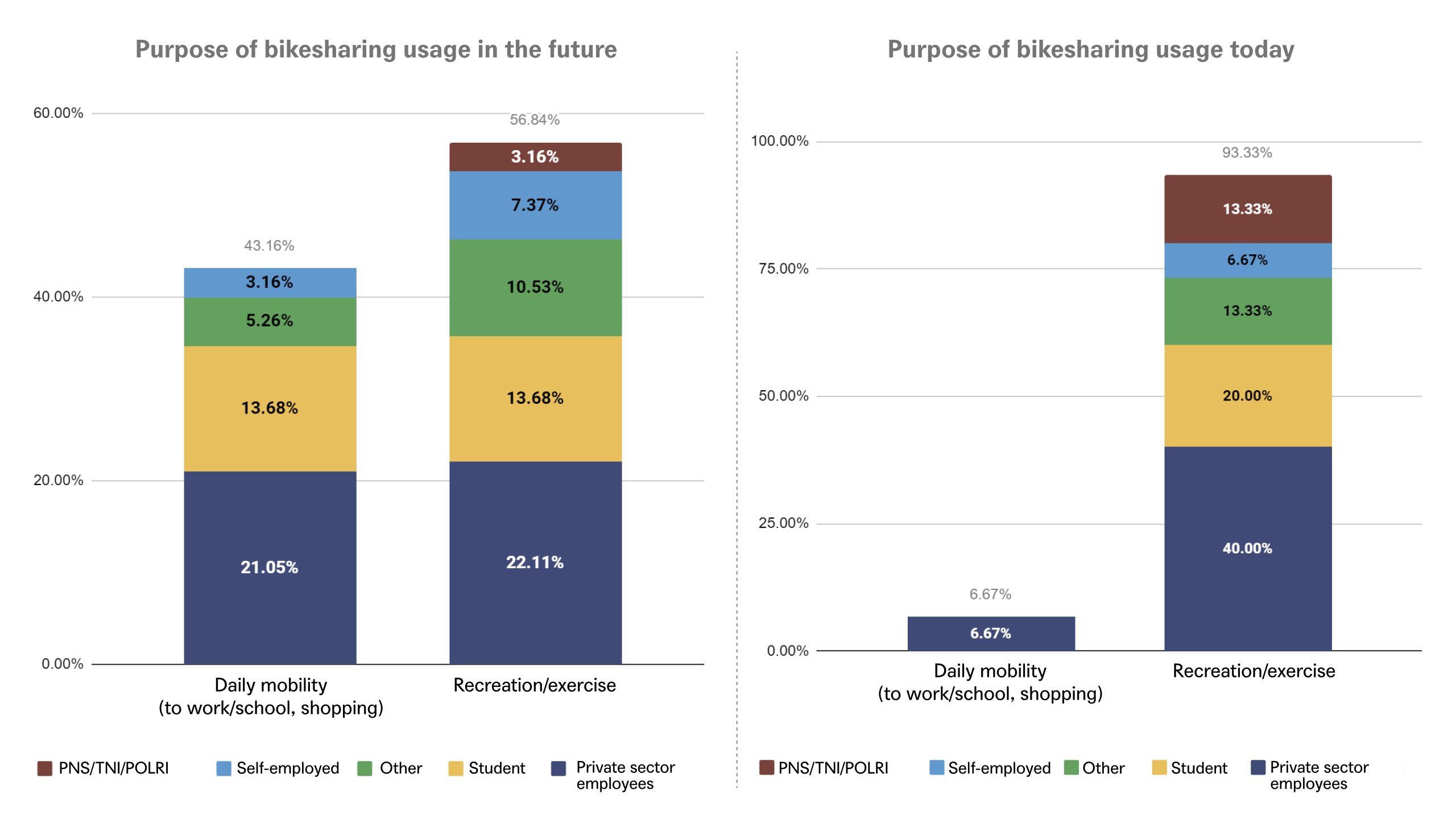
Beginning the journey towards a sustainable future city
Semarang is on its way to improve sustainable transport development by their upcoming BRT lane improvement plan and Old Town area revitalization, but a larger step should be taken to ensure the shift towards sustainable transport. Ensuring public transport first-last mile accessibility to be integrated in the city’s Non-Motorized Transport Roadmap is important, especially considering the majority of Trans Semarang users are vulnerable users, including women with children, people with large belongings, older persons, and people with disabilities (ITDP Survey, 2022). Improving accessibility and connectivity also means creating better traffic management and motorized vehicle limitation, street redistribution to prioritize active mobility, improved bus stop access, providing shared micromobility services, and safer intersection design.
The Semarang’s Old Town improvement project can be a strategic jumping-off point towards a city-wide revival; creating a more inclusive, accessible, and sustainable City of Semarang.

